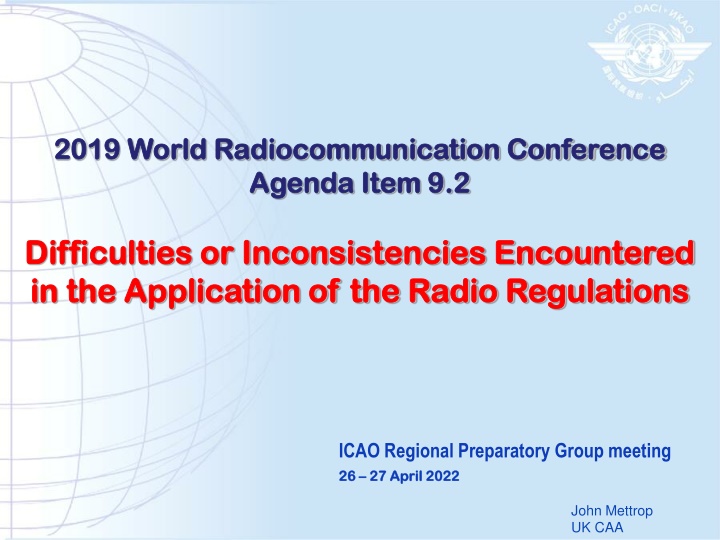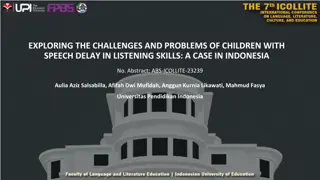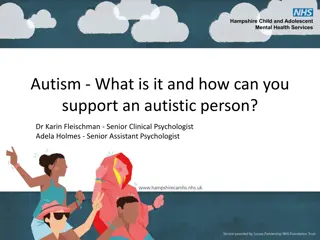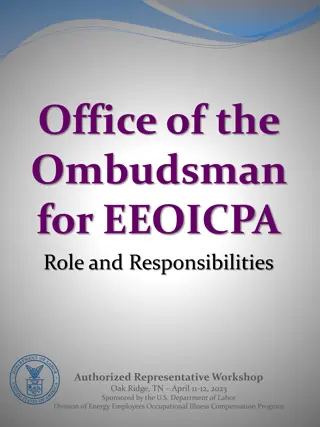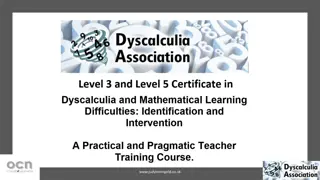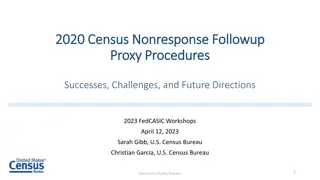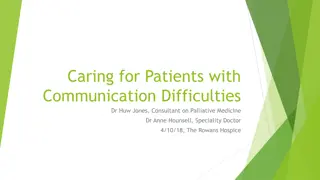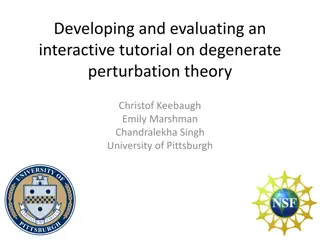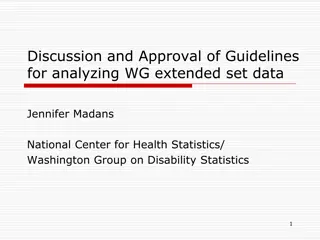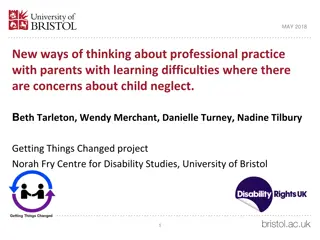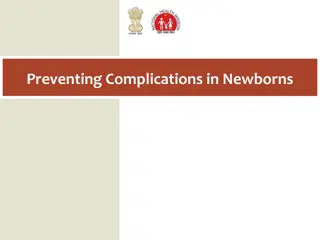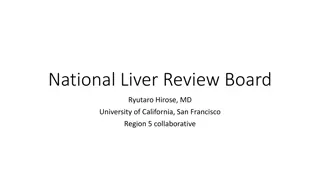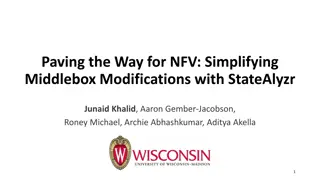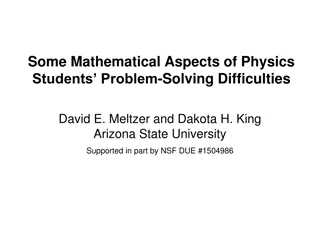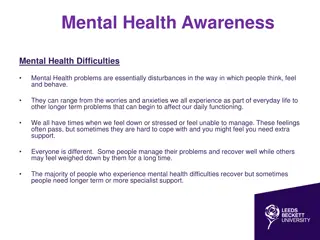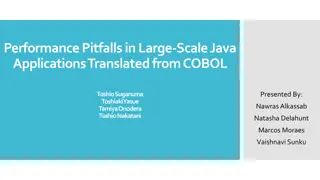Difficulties or Inconsistencies Encountered Difficulties or Inconsistencies Encountered in the Application of the Radio Regulations in the Application of the Radio Regulations
The agenda items at the World Radiocommunication Conference 2019 focus on difficulties encountered in the application of radio regulations, with a specific mention of aviation involvement. Resolution 427 aims to update aeronautical service provisions in the Radio Regulations. The implications of VHF communications being listened to by plane spotters and ADS-B rebroadcast on websites are also discussed.
Download Presentation

Please find below an Image/Link to download the presentation.
The content on the website is provided AS IS for your information and personal use only. It may not be sold, licensed, or shared on other websites without obtaining consent from the author.If you encounter any issues during the download, it is possible that the publisher has removed the file from their server.
You are allowed to download the files provided on this website for personal or commercial use, subject to the condition that they are used lawfully. All files are the property of their respective owners.
The content on the website is provided AS IS for your information and personal use only. It may not be sold, licensed, or shared on other websites without obtaining consent from the author.
E N D
Presentation Transcript
2019 World Radiocommunication Conference 2019 World Radiocommunication Conference Agenda Item 9.2 Agenda Item 9.2 Difficulties or Inconsistencies Encountered Difficulties or Inconsistencies Encountered in the Application of the Radio Regulations in the Application of the Radio Regulations ICAO Regional Preparatory Group meeting 26 26 27 April 27 April 2022 2022 John Mettrop UK CAA
WRC WRC- -19 Agenda Item 9.2 19 Agenda Item 9.2 This agenda sub-item is strictly limited to the Report of the Director on any difficulties or inconsistencies encountered in the application of the Radio Regulations and the comments from administrations. with Administrations being invited to inform the Director of the Radiocommunication Bureau of any difficulties or inconsistencies encountered in the Radio Regulations.
Why is Aviation Involved? Why is Aviation Involved? Resolution 427 (WRC-19) Updating Provisions Related to Aeronautical Services in the Radio Regulations Resolves to invite the ITU Radiocommunication Sector to study the Articles, limited to Chapters IV, V, VI and VIII of Volume I, of the Radio Regulations and their associated Appendices, as appropriate, in order to identify outdated aeronautical provisions with respect to ICAO standards and recommended practices and to develop examples of regulatory texts for updating these provisions, while ensuring that potential changes to such provisions will not impact any other systems or services operating in accordance with the Radio Regulations,
ARTICLE 18 Licences 18.1 18.2 18.3 18.4 telecommunications, as provided in the relevant provisions of the Constitution and the Convention. Moreover, the licence shall mention, specifically or by reference, that if the station includes a receiver, the interception of radiocommunication correspondence, other than that which the station is authorized to receive, is forbidden, and that in cases where such correspondence is involuntarily received, it shall not be reproduced, nor communicated to third parties, nor used for any purpose, and even its existence shall not be disclosed. 2 The holder of a licence is required to preserve the secrecy of What are the implications on the holder of a licence for VHF comms listened to by plane spotters etc, ADS-B Re- broadcast on numerous websites, .
ARTICLE 28 Radiodetermination Services Section IV Radiobeacon stations When an administration thinks it desirable in the interests of navigation to organize a service of radiobeacon stations, it may use for this purpose: 28.18 11 28.19 a) 28.20 function as radiobeacons, at the request of mobile stations. b) fixed stations, coast stations or aeronautical stations designated to Do we want fixed stations involved? Does this mean you need a comms frequency for every radiobeacon?
ARTICLE 32 Operational procedures for distress communications in the global maritime distress and safety system (GMDSS) Section III Distress traffic 32.60 32.61 finding of a mobile unit in distress or the location of survivors. These signals include those transmitted by searching units, and those transmitted by the mobile unit in distress, by survival craft, by float-free EPIRBs, by satellite EPIRBs and by search and rescue radar transponders to assist the searching units. 32.62 2) Homing signals are those locating signals which are transmitted by mobile units in distress, or by survival craft, for the purpose of providing searching units with a signal that can be used to determine the bearing to the transmitting stations. 32.63 3) Locating signals may be transmitted in the following frequency bands: 117.975-137 MHz; 156-174 MHz; 406-406.1 MHz; and 9 200-9 500 MHz. 36 C Locating and homing signals 1) Locating signals are radio transmissions intended to facilitate the Does aviation want maritime signals across these frequency bands
ARTICLE 36 Authority of the person responsible for the station 36.1 of the person responsible for the aircraft or other vehicle carrying the mobile station. 1 The service of a mobile station is placed under the supreme authority 36.2 comply with these Regulations and that the mobile station for which the operator is responsible is used, at all times, in accordance with these Regulations. 2 The person holding this authority shall require that each operator How does this Apply to UAVs/Drones? 36.3 responsible, as well as all the persons who may have knowledge of any information whatever obtained by means of the radiocommunication service, are placed under the obligation of observing and ensuring the secrecy of correspondence 3 Except as otherwise provided for in these Regulations, the person 36.4 of aircraft earth stations 4 The provisions of Nos. 36.1, 36.2 and 36.3 shall also apply to personnel How does this Apply to VHF Comms, ADS-B etc?
Comparison of RR Appendix 12 & ICAO Annex 10 Limits Minimum Field Strength Required at the Boundary of the Rated Coverage for Radio Beacons by Day for 15 dB S/N Latitude ITU ICAO Regions 1 & 2 Region 3 <5 N&S 120 V/m 120 V/m 320 V/m 5 -15 N&S 120 V/m 120 V/m 85 V/m 15 -25 N&S 120 V/m 120 V/m 40 V/m 25 -30 N&S 120 V/m 120 V/m 18* V/m 30 -35 N&S 70 V/m 120 V/m 18* V/m 35 -40 N&S 70 V/m 120 V/m 18* V/m >40 N&S 70 V/m 70 V/m 18* V/m A star shown against a figure indicates that a higher value of field strength probably 2 or 3 times the values shown (plus 6 to plus 10 dB) may be necessary in the presence of high aircraft noise and/or industrial noise
